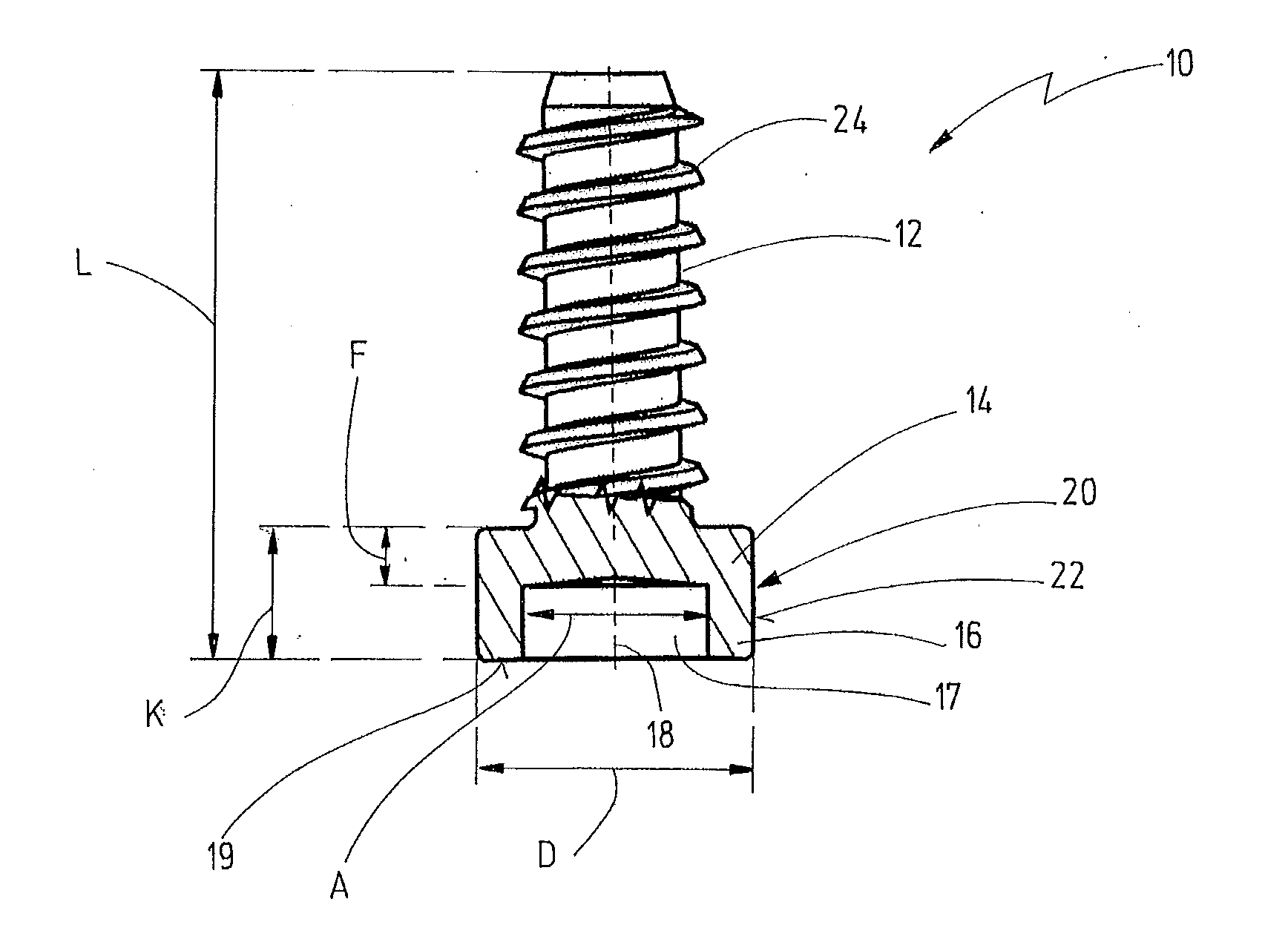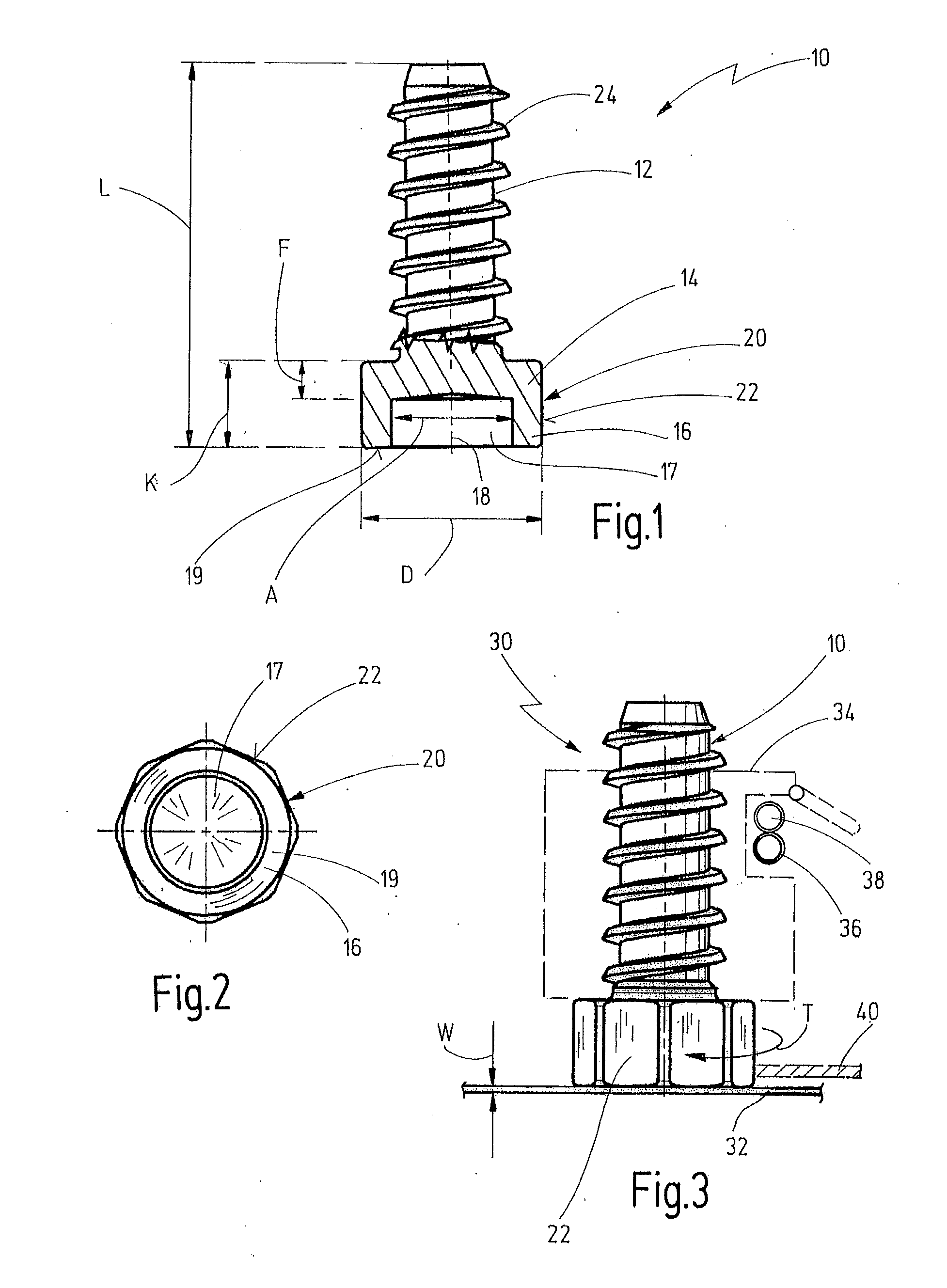Stud for stud welding
a technology for welding studs and studs, applied in the direction of screws, washing machines, ways, etc., can solve the problems of requiring relatively expensive rework, difficult welding of studs onto body sheets that are becoming increasingly thinner, and “burning” of body sheets
- Summary
- Abstract
- Description
- Claims
- Application Information
AI Technical Summary
Benefits of technology
Problems solved by technology
Method used
Image
Examples
Embodiment Construction
[0040]An embodiment of a stud according to the invention is designated generally by 10 in FIGS. 1 and 2.
[0041]The stud 10 has a shank 12, adjoining which in the axial direction is a flange 14. Adjoining the flange 14 in the axial direction is an annular section 16, within which a recess 17 of circular cross section is located.
[0042]A longitudinal axis of the stud 10 is shown at 18.
[0043]A front annular surface 19 is formed on the front end of the annular section 16. The recess 17 extends from the front annular surface 19 up to the flange 14.
[0044]On the whole, the flange 14 and the annular section 16 form a head section 20, the outer circumference of which has a polygonal shape 22, in the present case an octagonal shape.
[0045]A coarse thread 24 is formed on the shank 12. The stud 10 has an overall length L. The axial length of the head section 20 is designated by K in FIG. 1. The axial length of the flange section is designated by F in FIG. 1. An outside diameter of the head section...
PUM
| Property | Measurement | Unit |
|---|---|---|
| thickness | aaaaa | aaaaa |
| thickness | aaaaa | aaaaa |
| thickness | aaaaa | aaaaa |
Abstract
Description
Claims
Application Information
 Login to View More
Login to View More - R&D
- Intellectual Property
- Life Sciences
- Materials
- Tech Scout
- Unparalleled Data Quality
- Higher Quality Content
- 60% Fewer Hallucinations
Browse by: Latest US Patents, China's latest patents, Technical Efficacy Thesaurus, Application Domain, Technology Topic, Popular Technical Reports.
© 2025 PatSnap. All rights reserved.Legal|Privacy policy|Modern Slavery Act Transparency Statement|Sitemap|About US| Contact US: help@patsnap.com


